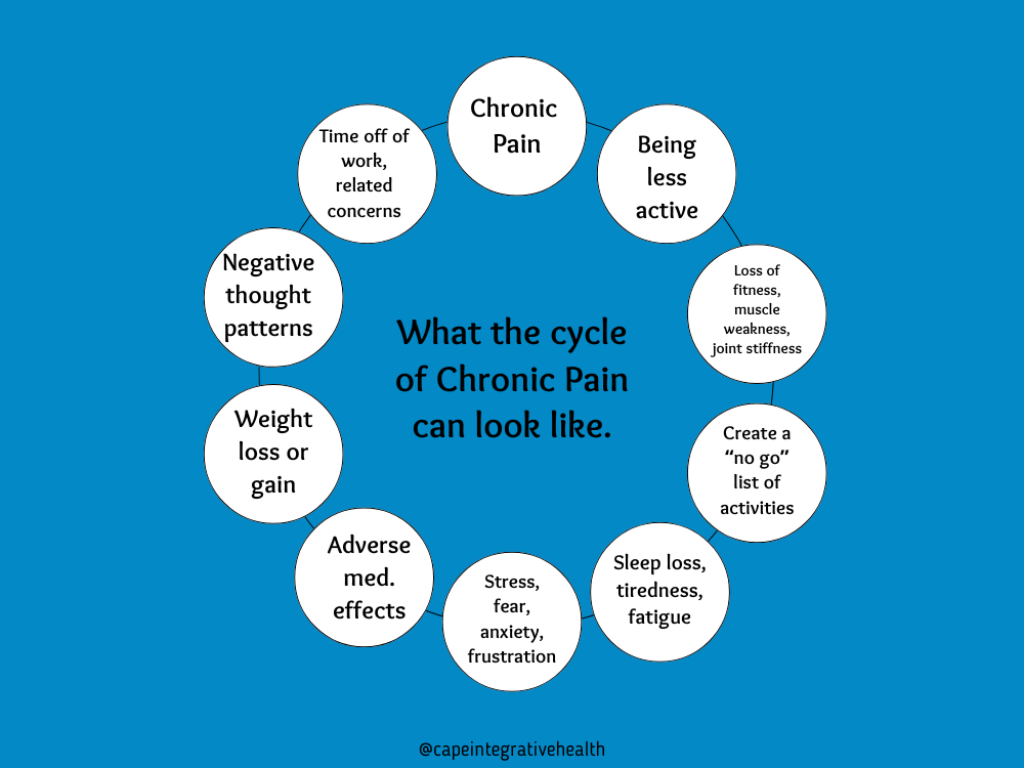
The stats on chronic pain are very sobering, but not surprising to us at all: over 30% of Americans are suffering from it, an estimated 116 million people*.
For clarity: chronic pain is pain or discomfort lasting more than 12 weeks/3 months.
We are very aware of the tremendous impact that chronic pain can have on your entire life. We know first hand from our patients that it can often be much more than simply pulling away from your preferred activities for a while.
Our Dr. Crystal Zagwyn is breaking this all down for us in the coming weeks to better understand it so that you can recognize it, and to better understand how your brain works in relationship to your body and to pain.
Here’s what elements of the chronic pain cycle can look like:
- The pain itself causes you to be less active.
- Being less active causes a loss of fitness, muscle weakness, and joint stiffness. This shows up with initiating movements like rolling over in bed, getting out of a chair, difficulty transitioning from sitting on the floor to standing up, etc.
- This can lead to the creation of a “No-Go” list. Things that are avoided to reduce the chance of pain, stiffness, a flare up.
- Feeling fatigued, tired, not sleeping well.
- Thoughts of fear, anxiety, frustration. Muscles feeling tense.
- Normal remedies like medication, over the counter relievers, supplements start not working like they did before.
- Weight fluctuations.
- Steady weight gain.
- Uncertainty about future engagements
- Mood swings.
- Difficulty with relationships with friends and family.
- Financial strains/stressors (especially if there is a loss of work).
- Missing time from work due to burn out, fatigue, or pain.
For us, treating chronic pain is so incredibly important, it became a driving force behind creating our own model of care. What you need to break free from this cycle can be totally different than anyone else. Personalized care is essential.
Stay tuned as Dr. Crystal dives deep into each element that you may be experiencing, right here on our blog!
*Sources: CDC, NIH, Institute of Medicine
